By Dan Weisz
Western Diamondback Rattlesnakes are common throughout the Foothills. I recently had some very nice, close-up views of one.
While we were engrossed in taking bird photos at The Pond at Elephant Head, I noticed the tail of a ground squirrel in the distance. The squirrel’s body was behind a low hill but his tail was visible and sticking straight up, waving back and forth frenetically. This looked very strange. After watching this activity for over a minute, I realized the squirrel was probably upset at something and I mentioned it to Eric, the student intern who was helping us. Eric leapt up from the photo blind and ran across the desert to begin searching through the bushes where the squirrel had been. He yelled out “rattlesnake” and ran back to the house to get a snake stick. Eric brought the snake back to the photo blind where we were free to watch it for a while!
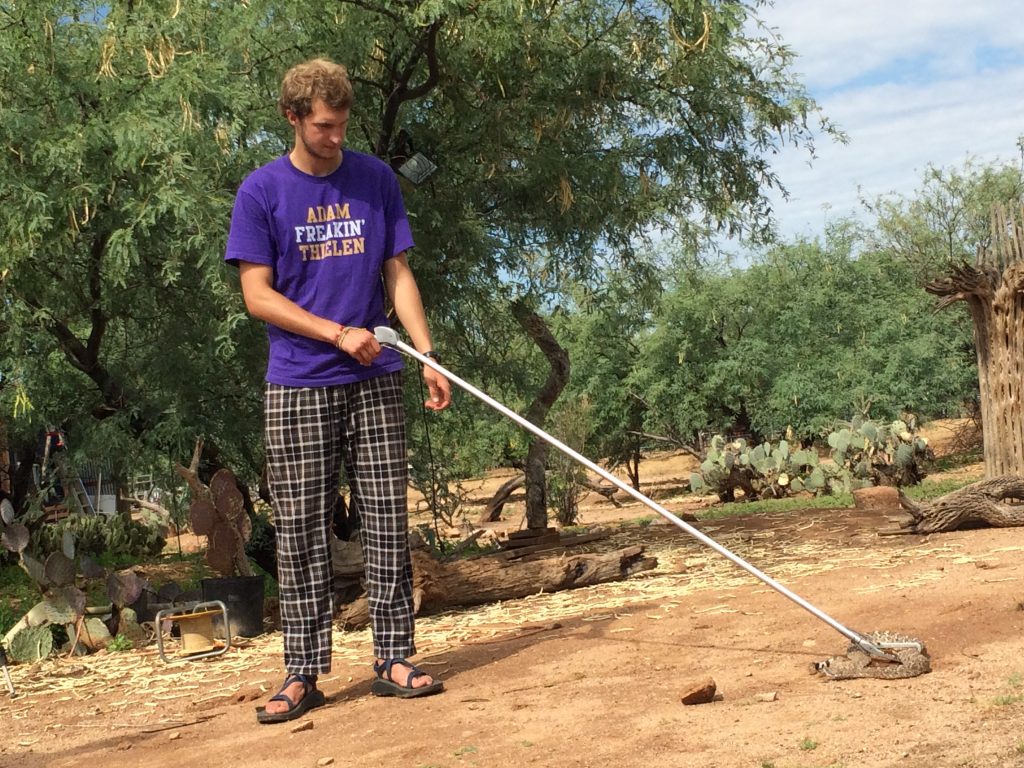
The Western Diamondback Rattlesnake backed up to the pond while watching us intently. For some additional atmosphere while you are looking at these photos, click here:
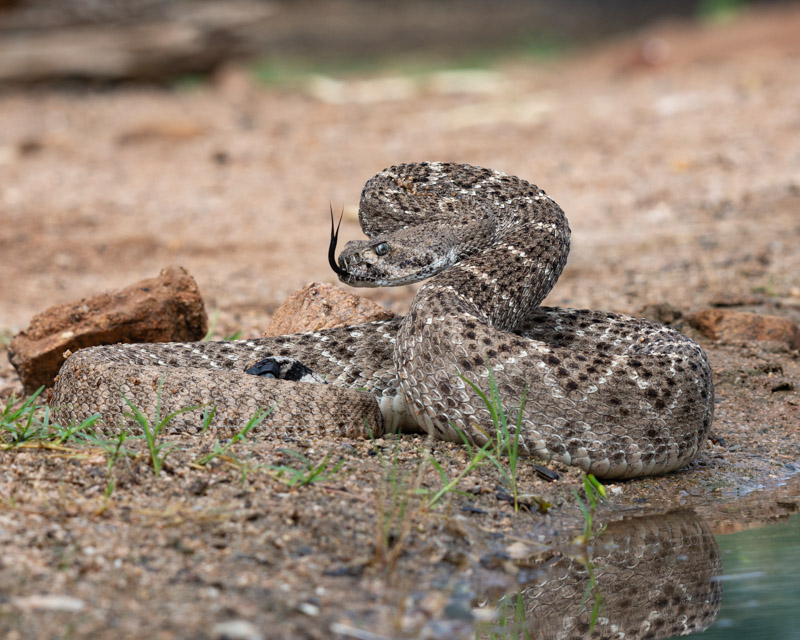
It watched and investigated. When a snake flicks its tongue, it is collecting odors that are present in minuscule moisture particles floating through the air. Those odors are analyzed by the snake’s Jacobson’s organ which is located inside the roof of the its mouth. The rattlesnake’s tail is made up of a protein called Keratin- the same protein that our hair and fingernails are made of.
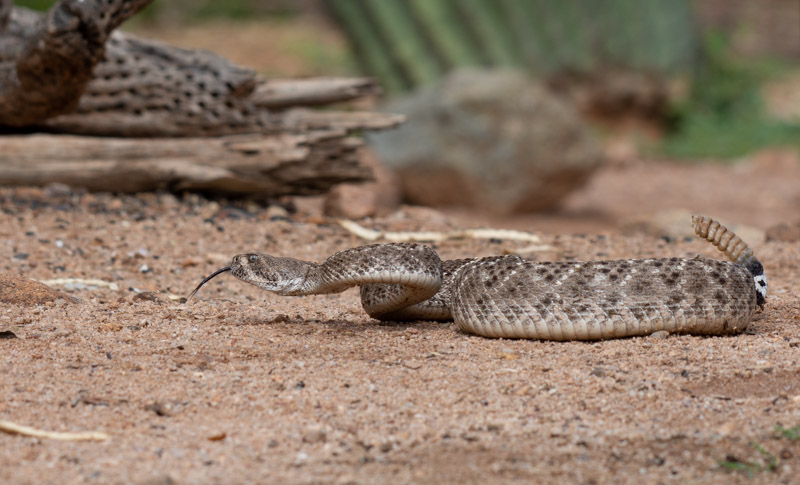
He had an impressive rattle! You can count the rattles, but that number doesn’t tell you anything. Rattlesnakes add a new rattle each time an old skin is shed. If rattlesnakes only shed their skin once per year, then maybe the number of rattles would mean something. But rattlesnakes shed their skin irregularly. A rattlesnake may shed its skin several times during the rapid growth of its first year, and some older snakes may not even shed their skin once per year. Also, rattles can break off if they snag on something while the snake is moving. Counting the rattles does let you know the snake has shed its skin at least that number of times.
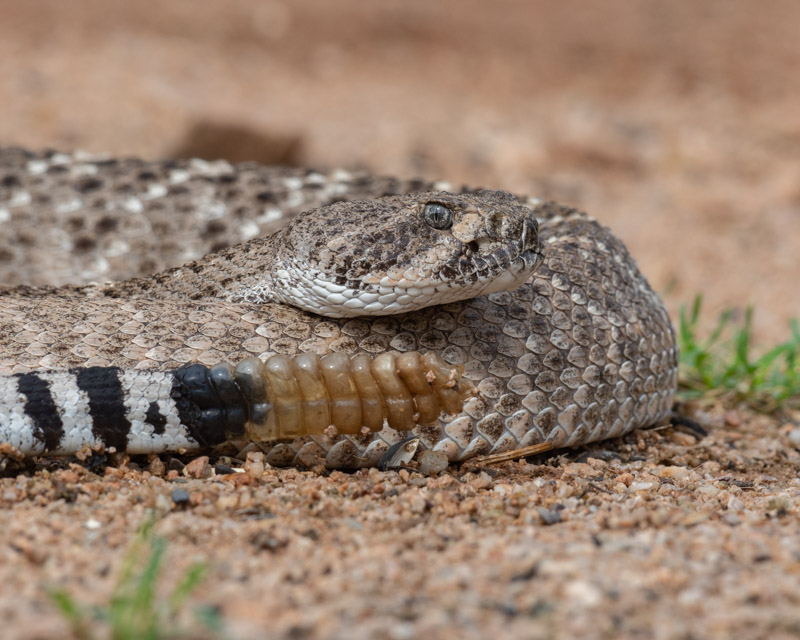
The snake isn’t threatening anyone with its tongue. It is just trying to get a better sense of its surroundings by “tasting” the air. Snakes have very poor eyesight and limited hearing. To compensate, they have an excellent sense of smell. While they have nostrils (seen clearly below), they use their tongues to pick up the scent of nearby prey or predators.
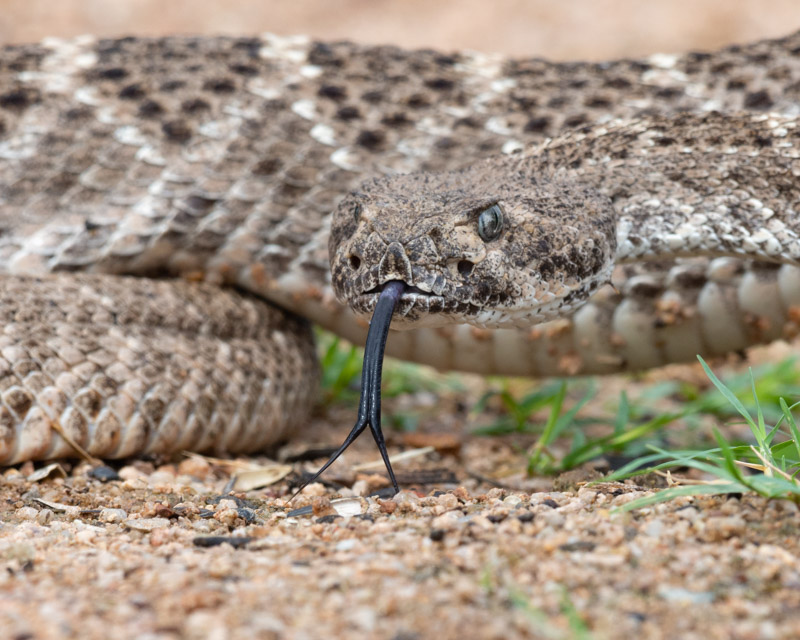
Good morning!
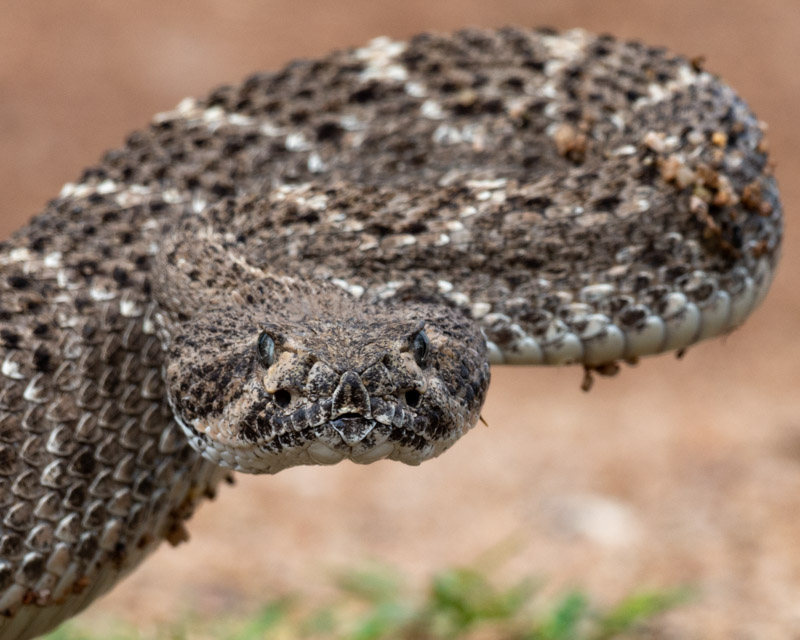
This defensive posture helps to anchor the snake’s body in case it does need to strike. The snake we watched never did strike out and eventually turned and swam across the pond and slithered off into the desert. It sure looks strong in this shot.
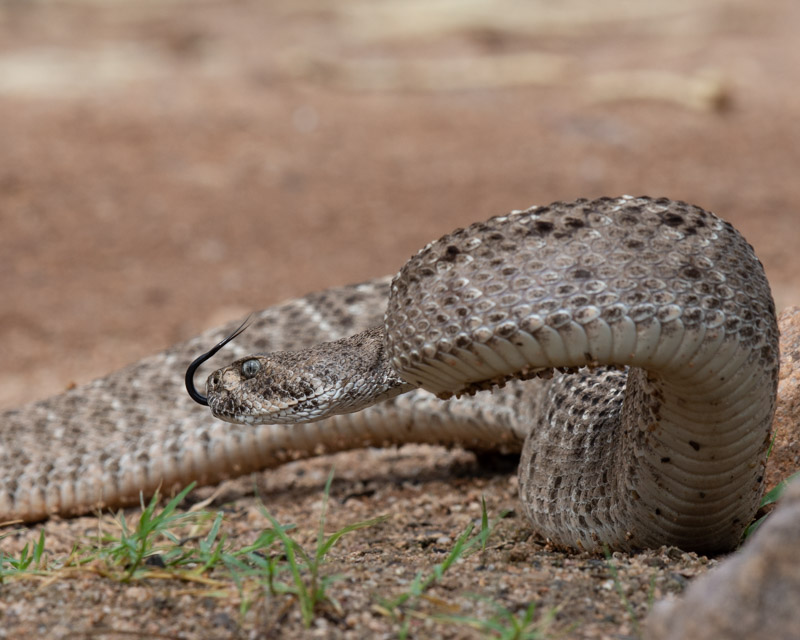
One final look at this handsome creature of the desert.
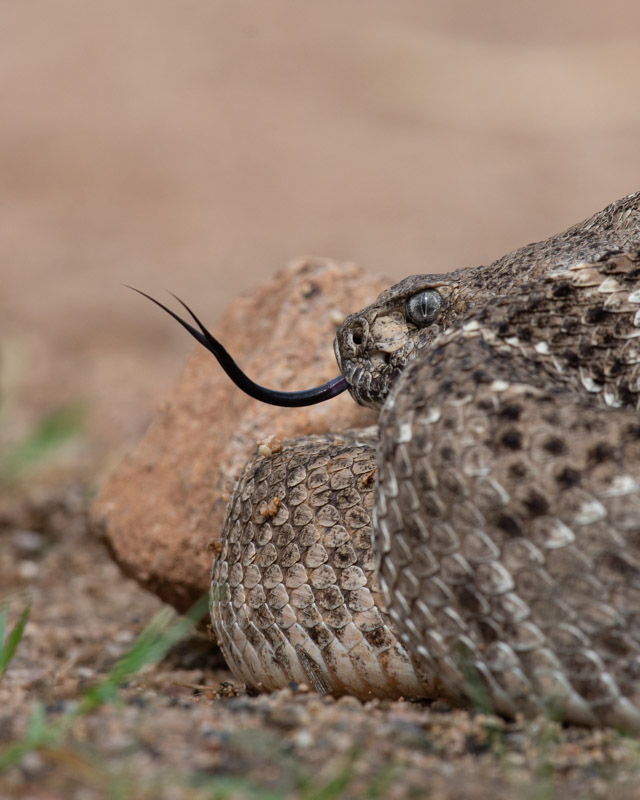
Coming up, more from The Pond as well as Raccoon youngsters at Sweetwater, Burrowing Owls in Marana, and a final look at the Western Screech Owlets who have finally flown off to begin their lives as adults!
Return to Foothills Clusters Home
